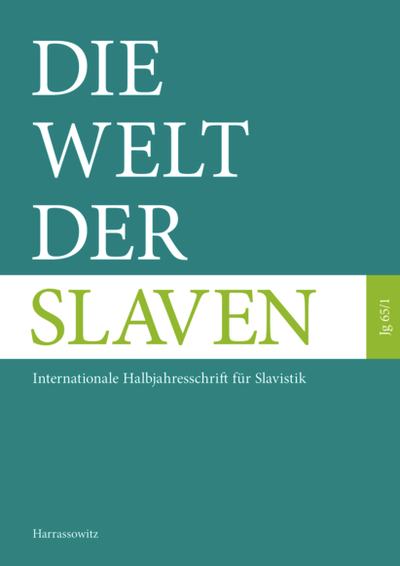Образы будущего в искусстве
Schlagwörter:
cosmos, spaceflight, weightlessness, Konstantin Ciolkovskij’s Cosmic Voyage, Kazimir Malevič’s Suprematist SatelliteAbstract
Visions of the future in art
Since the beginning of the 20th century outer space adventures represented in Russian fiction, cinema and visual arts has been connected with actual space exploration. Konstantin Ciolkovskij, who is known as “the father of Soviet cosmonautics”, wrote sci-fi novels dedicated to the spaceflights and consulted the first Soviet sci-fi film Cosmic Voyage (1935) directed by Vasilij Žuravlev. In the film actual details of outer space travelling such as weightlessness and many others, were represented for the first time. Ciolkovskij created a series of drawings called Album of Cosmic Voyages (1933), in which he predicted exact details of future spaceflights such as space walks, and represented imaginary space habitats. Kazimir Malevič described weightlessness (bezvesie) as a basic principle of Suprematism and proposed to create a new Suprematist satellite between the Moon and the Earth. Bulat Galeev, artist and musician, pioneer of Soviet media-art and founder of his “Prometheus” Special Construction Bureau, constructed an automated audio-visual object for monitoring all systems and special apparatus for the Soviet space program to help cosmonauts to fight with long-duration flight sensory deprivation. Vjačeslav Kolejčuk, an artist, architect and musician and a key figure of Russian kinetic art, designed an original self-assembling Space Radio Telescope and a Hall of Outer Space Travelling at the Memorial Museum of Cosmonautics in Moscow (1981). The project Center for Cosmic Energy (2003) was created by artists Il’ja and Ėmilija Kabakov and dedicated to the archeology of Russian cosmism, the avant-garde and the fate of utopia directed to outer space. At the end of the Soviet era, the New Artists were inspired by the cosmos. Timur Novikov organized his exhibition at the Cosmos Pavilion at VDNX in Moscow at the first Space Rave Gagarin Party (1991). The composer and founder of the orchestra Popular Mechanica Sergej Kurëxin organized his Center for Cosmic Research (1992) in St. Petersburg. Artist Pavel Pepperštejn works today with the archeology of outer space utopia, combining Russian cosmism ideas, avant-garde prophecy and post-conceptual dreams.
Literaturhinweise
Ciolkovskij, Konstantin Ė. 1895. Grёzy o Zemle i nebe i ėffekty vsemirnogo tjagotenija. Izdanie A.N. Gončarova. Moskva.
Ciolkovskij, Konstantin Ė. 1903. Issledovanija mirovyx prostranstv reaktivnymi priborami. Naučnye obozrenie 5. 45–76.
Malevič, Kazimir S. 1995. Suprematizm: 34 risunka. In Šatskix, Aleksandra S. (ed.), Kazimir Malevič: Sobranie sočinenij v pjati tomax, tom 1 (Statʹi, manifesty, teoretičeskie sočinenija i drugie raboty, 1913–1929), 185–207. Moskva.
Odoevskij, Vladimir F. 1959. 4338 god: Povesti i rasskazy. Moskva.
Shatskikh, Alexandra. 2010. El cosmismo supremático de Kazimir Malévich. In Bowlt, John E. (ed.), El Cosmos de la vanguarda rusa: Arte y exploración especial 1900–1930, 89–96. Santander.
Turkina, Olesja. 2010. Izobretaja kosmos: O kosmičeskix putešestvijax, soveršennyx Konstantinom Ėduardovičem Ciolkovskim. In Mazin, Viktor (ed.), Kabinet Ju: Kartiny mira III, 293–310. Sankt-Peterburg.
Turkina, Olesja. 2011. Rasširjajuščajasja vselennaja rasširennogo kino. In Ignatova, Irina (ed.), Rasširennoe kino: Katalog-issledovanie, 61–68. Moskva.
Turkina, Olesya. 2010. Los viajes espaciales de Konstantin Tsiolkovsky. In Bowlt, John E. (ed.), El Cosmos de la vanguarda rusa: Arte y exploración especial 1900–1930, 63–73. Santander.

